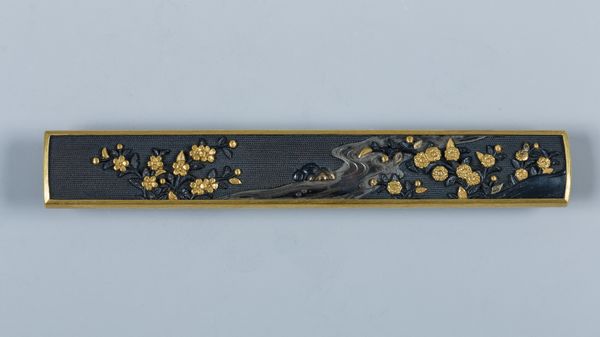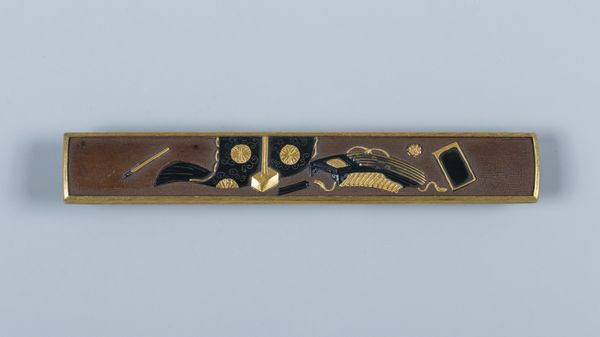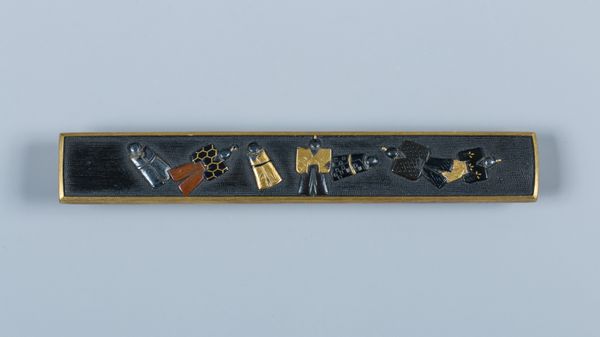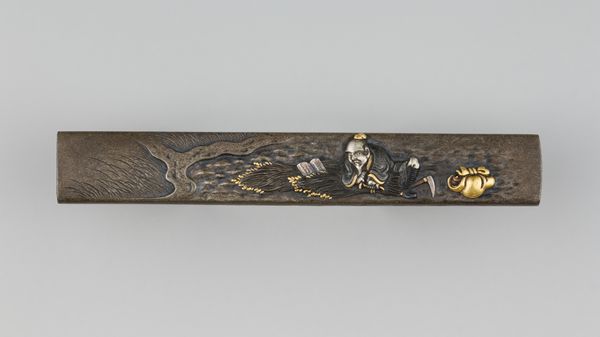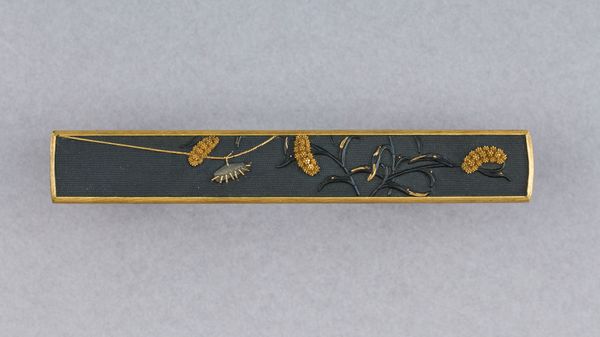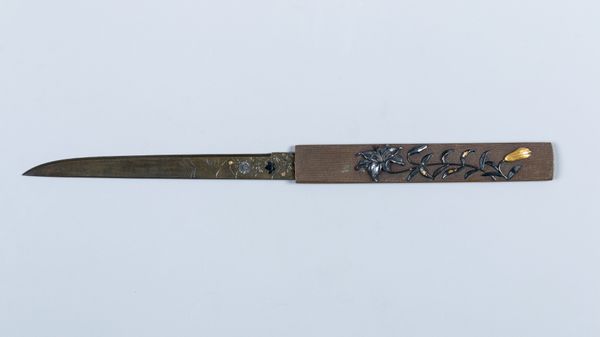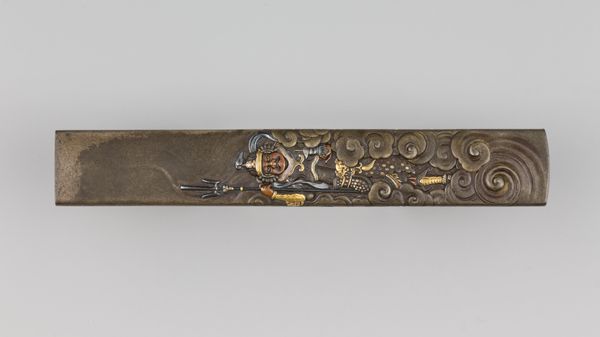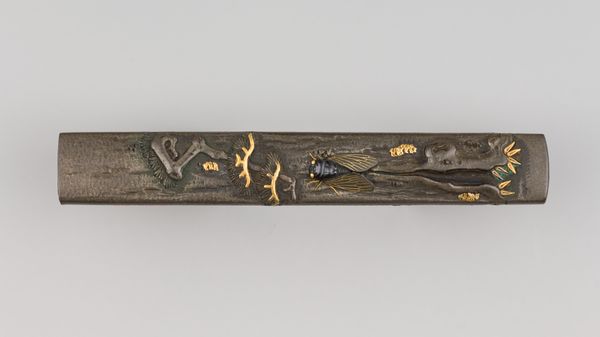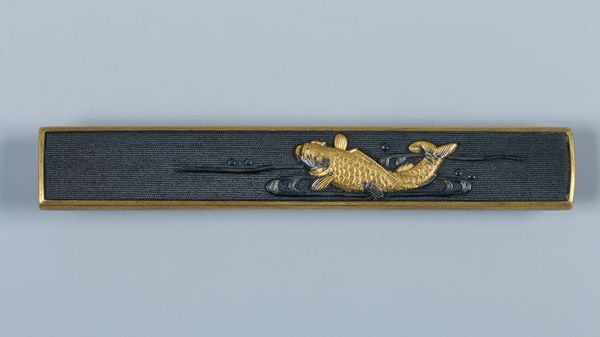
metal, engraving
#
medieval
#
metal
#
asian-art
#
japan
#
armor
#
decorative-art
#
engraving
#
sword
Dimensions: L. 3 13/16 in. (9.7 cm); W. 9/16 in. (1.4 cm)
Copyright: Public Domain
Curator: Looking at this object, I immediately sense such focused dedication—almost obsessive care—embedded into something seemingly small. Editor: Yes, and what a magnificent miniature narrative! We’re observing a kozuka, a knife handle, made sometime between 1600 and 1675. Its creator is identified as Gotō Kenjō. Currently, it resides here at the Metropolitan Museum of Art. Curator: It really tells a story, doesn’t it? You can practically feel the weight of that sword and the formality of the armor. This is about more than just weaponry, I think. Editor: Precisely. The use of metal, the engraved detail… it draws the eye into a sophisticated, almost semiotic dance. Observe how the elements—sword, armor, fittings—interact spatially. This invites us to decipher a symbolic language. Curator: Right! It’s like this entire history, this warrior ethos, concentrated onto the palm of your hand. This handle is not just decoration; it’s a mnemonic device, perhaps even a sort of talisman. How did it feel for its original owner to grasp this object daily? I bet that feeling was profound, intimate. Editor: I agree; utility fuses with profound design. Note the careful contrasts of gold and the dark metallic background. Each accent enhances the texture of the entire design. Curator: Seeing that blend of utility, craft, and symbolism... it stirs my own need to honor simple things, daily rituals. Editor: It leaves me with a heightened sense of formal awareness—a reminder of how meaning and emotion emerge through calculated visual structure.
Comments
No comments
Be the first to comment and join the conversation on the ultimate creative platform.

